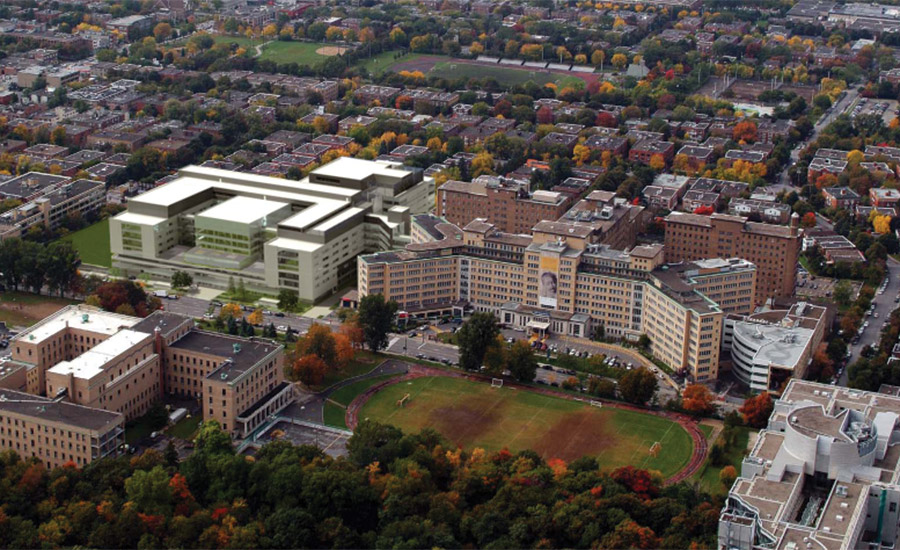Security concerns for healthcare institutions are unlike those of any other market segment. Hospitals face increasing challenges to maintaining peace and security as emergency rooms are overcrowded, language barriers create tensions, and domestic violence is on the rise. Keeping patients, staff, and physicians safe is a large concern for most hospital security executives, as is providing a friendly, calming and open design that makes patients and visitors feel at ease.
Security at the Sainte-Justine (CHU Sainte-Justine), a pediatric and obstetric university health center affiliated with the Université de Montréal, located in Montreal, Quebec, is employing security technology with appropriate training and strong policies and procedures to secure its campus, facilities and people.
CHU Sainte-Justine was founded in 1907 by Justine Lacoste-Beaubien, and it’s the largest mother-child centre in Canada and the second largest pediatric hospital in North America. With its 484 beds, among which 30 are from the intensive care unit, it receives 19,000 in-patients per year.
The facility also includes an internationally renowned research centre, a small psychiatric department, and an affiliation with Centre de réadaptation Marie-Enfant, the only exclusively pediatric rehabilitation centre in Quebec, which regularly brings additional patients to CHU Sainte-Justine.
Currently, CHU Sainte-Justine is undergoing major construction with two new buildings. The project “Grandir en Santé” will increase the hospital’s square footage by 60 percent.
The number of patients and the growth that the facility is experiencing requires a large-scale surveillance and access control system. Julie Carpentier is the head of security and emergency preparedness at CHU Sainte-Justine, a role that she’s held for the past seven years. She has more than 15 years of experience in emergency preparedness.
“In Quebec, the culture for hospitals is an open and public place. We have to keep the main doors open at all times. Some people come in just to use our pharmacy. And because we are a pediatric hospital, sometimes we have young children that don’t always have their parents with them. They are watched by the staff from the unit that they stay on, but they are also vulnerable for kidnapping or other security issues like that. It has never happened but it is a threat.”
As the hospital has experienced many growth spurts throughout its history, Carpentier and CHU Sainte-Justine have employed and relied upon the Genetec Security Center system, which creates a reliable IP video surveillance system that also allows for easy expansion and open integration with the hospital’s access control system. Carpentier has worked with Maxime Boivin, vice president of sales and operations for integrator Panavidéo since 2010 on the installation and upkeep of the security system, which includes 750 Bosch and Panasonic IP security cameras in place around the hospital and in the parking lots. As that number has steadily increased throughout the past years, the Security Center IP video management system has been beneficial because it gives CHU Sainte-Justine the ability to deploy a surveillance system that truly matches its security needs.
The easy-to-use search and bookmarking features of Security Center have helped to expedite investigations, and CHU Sainte-Justine operators are hoping to achieve even greater efficiency by using Plan Manager, the map-based interface of Security Center.
Boivin says: “The main thing that I like about the Genetec system for CHU Sainte-Justine is that it offers a lot of flexibility. There is a lot of fine tuning with the cameras and access control that can be done.”
Carpentier adds that she appreciates the open architecture of the Genetec system. “When we were looking to add more cameras, we didn’t need to get rid of everything that we had and start all over. Adding cameras and locations that we want the cameras to watch was easy in terms of integration.”
“We can’t watch everything all the time, so we use motion detection from the cameras and the analytics system to trigger alarms to see what’s happening in particular areas,” Carpentier notes. “The system gives us the tools to react quickly to any security situation. Our patients notice this, and it makes them feel safe in our hospital,” she says.


